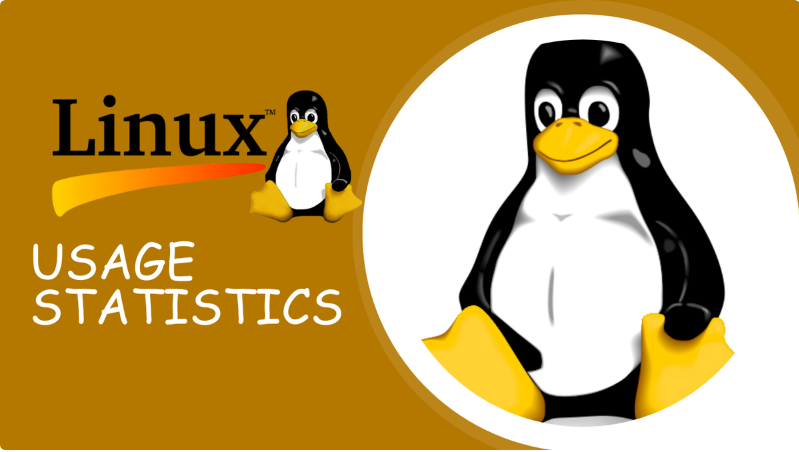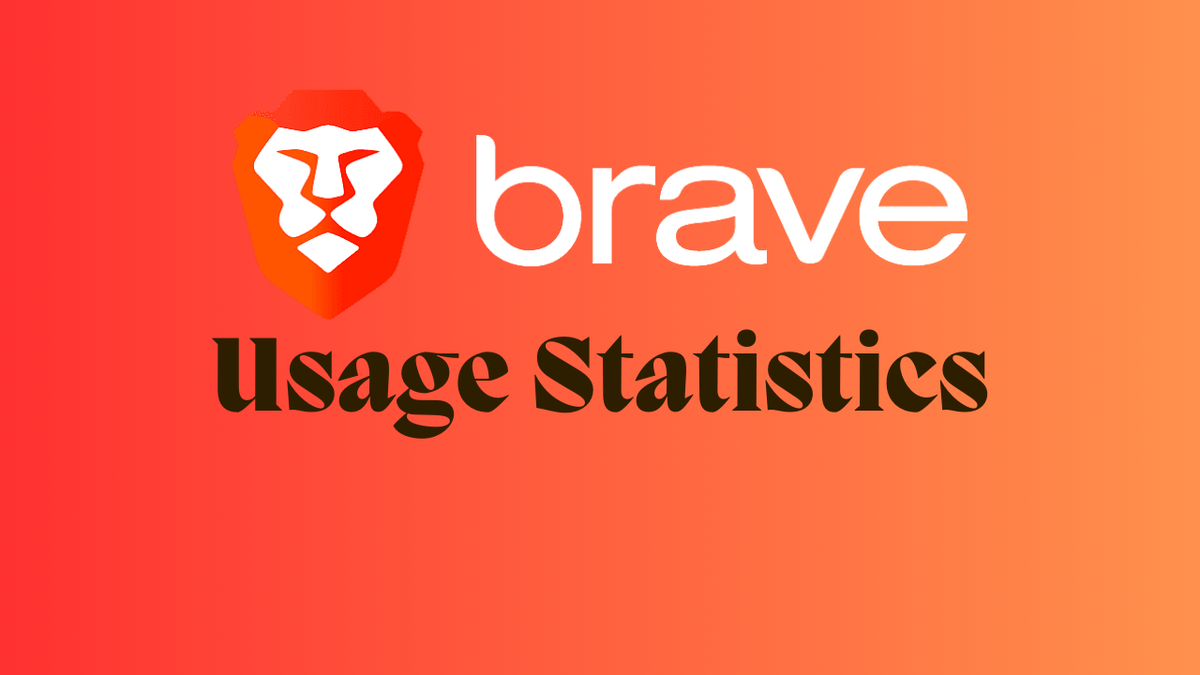Linux Statistics and Facts, Trends 2024(Recent Data)

Linux dominates as the operating system behind nearly 97% of the world's leading web servers, showcasing its widespread popularity. Major online players like Twitter, Yahoo, Amazon, and eBay rely on this robust kernel.
Also read;
While Linux might seem unfamiliar to some, its influence extends far beyond common perception, playing a pivotal role in global technology infrastructure.
A key aspect of its appeal lies in its open-source nature, enabling anyone to access and modify the code.
Additionally, the majority of Linux versions are freely available for download, fostering accessibility and innovation in the tech community.
Table of Contents
- What is Linux OS?
- General Linux Facts & Statistics
- How popular is Linux in the market?
- How many professional developers use Linux in their workflow?
- What is the current market value of the Linux market?
- Operating System Preferences of Developers
- Linux Usage Statistics
- Linux Distribution Statistics
- Linux Distribution Market Share
- Linux Server Market Share
- Conclusion
- Sources
What is Linux OS?
Linux, born from the open-source Linux Kernel, stands as an accessible operating system open for download, modification, and distribution among private users.
However, its usage for commercial purposes is restricted. Noteworthy commercial distributions of Linux include Red Hat Enterprise Linux, SUSE Linux Enterprise, Debian, Fedora Linux, and Ubuntu, each offering distinct features and functionalities.
General Linux Facts & Statistics

- The global Linux industry is anticipated to experience substantial growth, projected to increase from $3.89 billion to $15.64 billion.
- Current statistics indicate a global user base of 32.8 million Linux users.
- Linux dominates the web server landscape, with 96.3% of the top one million web servers worldwide utilizing this operating system.
- Notably, 65 SpaceX flights have successfully employed Linux-powered technology.
- Red Hat Enterprise Linux commands a significant 33.9% share of the global server market.
- Women constitute 9.9% of the Linux kernel Git population.
- Linux is the powerhouse behind 85% of all Android phones globally.

- White individuals hold the majority among Unix/Linux administrators, representing 61.1% according to Zippia.
- Linux boasts a 2.09% market share, securing its position as the third most-used desktop operating system, according to Statista.
- Projections by Fortune Business Insights foresee the global Linux market reaching $15.64 trillion by 2027.
- Linux is the operating system for all of the world's fastest supercomputers, according to Blackdown.
- A staggering 96.3% of the top one million web servers globally rely on Linux, as reported by ZDNet.
- Active Linux distributions continue to be available, as affirmed by Tecmint.
- The global Linux Operating System Market is expected to achieve $17,506.92 million between 2023 to 2028, with a Compound Annual Growth Rate (CAGR) of 18.94%.
How popular is Linux in the market?
Globally, Linux finds favor in countries like India, Cuba, and Russia, while within the United States, it notably thrives in Utah and California.
Highlighting its popularity in India, Linux claims a significant user base, ranking among the top three nations embracing this operating system. Recent statistics indicate a noteworthy 3.52% global market share for desktop operating systems.
Specifically, Linux commanded an impressive 8.51% share within India's desktop OS market. This underscores the substantial presence and preference for Linux in the Indian computing landscape.
How many professional developers use Linux in their workflow?
- Statista reports that Linux-based operating systems are favored by 47% of professional developers, showcasing its significant adoption in the developer community.
- The flexibility of Unix-like systems, including Linux, allows programmers to customize the operating system to meet their specific requirements.
- A key factor contributing to Linux's popularity is its accessibility of compilers or interpreters, a feature distinct from Windows.
- Windows holds the top spot as the preferred operating system for 61% of those surveyed, while MacOS is utilized by 44% of professional developers.
- Notably, only 3% of developers make use of the Windows Subsystem for Linux, highlighting a preference for native Linux environments.
- A mere 1% of developers opt for alternative operating systems, emphasizing the dominant presence of Linux, Windows, and MacOS in the professional development landscape.
What is the current market value of the Linux market?
The global Linux Operating System market achieved a valuation of USD 6.8 million in 2022, anticipating a significant expansion at a CAGR of 18.94% throughout the forecast period.
By 2028, it is poised to reach an estimated value of USD 175.92 million. Linux, characterized as a Unix-like, open-source, and community-developed operating system, extends its functionality across various platforms, including computers, servers, mainframes, mobile devices, and embedded devices.
This comprehensive report delves into the multifaceted dimensions of the Linux Operating System market, covering product types, applications, and geographical segmentation.
A detailed examination of the competitive landscape, recent developments, and emerging trends is a focal point. Furthermore, the report offers an in-depth cost analysis and sheds light on the intricacies of the supply chain.
The growth of the Linux Operating System market is propelled by the escalating demand across various sectors worldwide. This includes:
- Large Enterprises: The Linux Operating System is witnessing heightened demand from large enterprises, contributing to its market growth.
- SMEs (Small and Medium Enterprises): Small and medium-sized enterprises are actively adopting the Linux Operating System, further fueling its expansion.
- Individuals: The market experiences a surge in growth driven by individuals who recognize and embrace the benefits of the Linux Operating System.
These factors collectively underscore the robust growth trajectory of the Linux Operating System market, making it a pivotal player in the evolving landscape of operating systems.
Operating System Preferences of Developers
As of 2023, a predominant majority of software developers globally expressed a preference for the Windows operating system as their primary development environment.
Following closely, Apple's macOS emerged as the second most favored operating system among software developers, with Linux securing the third position in terms of preference.
This highlights the widespread utilization of different operating systems within the software development community, reflecting the diverse choices and preferences of developers in crafting their digital environments.
Linux Usage Statistics
As of 2022, Linux continues to assert its dominance across various domains:
- A staggering 91.5% of the world's top 500 supercomputers operate on diverse Linux variants, underscoring its supremacy in high-performance computing.
- According to a ZDNet survey, 84% of enterprise businesses prefer Linux, attesting to its widespread adoption in corporate environments.
- Linux distributions command over 85% of the landscape for container operating systems, emphasizing their pivotal role in contemporary software development practices.
- Data from W3Techs, collected in October 2021, reveals that Linux serves as the operating system for 71.9% of known websites, solidifying its influence in the online realm.
- In the US, as of 2017, Linux is the choice for more than 13.4% of developers, contributing to its vibrant developer community.
- GitHub reports that the development of Linux distributions is prominently led by countries like the UK, USA, Germany, and Brazil, showcasing global collaboration.
- Linux dominates the virtual private server (VPS) landscape, with 37.8% of VPS hostings being Linux-based, as per Hosting Tribunal.
- The Linux desktop user base experiences consistent growth, estimated to increase by 800,000 to 900,000 users annually.
- TechRepublic's 2020 survey highlights that 74% of Linux users state a workplace preference for Linux in application development.
- The Linux kernel releases 4.8 and above boast an impressive 2 million lines of code, indicative of the robust and expansive Linux user and contributor community.
- According to the Stack Overflow Developer Survey 2020, 27.7% of professional developers favor Linux as their primary operating system, further solidifying its position in the development landscape.
Linux Distribution Statistics
Pinpointing an exact figure remains challenging, yet recent Linux usage statistics, particularly data from Ubuntu, indicate a substantial user base exceeding 40 million on desktops. Ubuntu stands out as one of the most widely embraced Linux distributions, claiming around 34.5% of all websites powered by Linux.
Additionally, when combined with Debian, these two distributions collectively constitute a significant 49.9% share of all Linux distributions utilized for web-based applications. This underscores the substantial impact and popularity of Ubuntu in the Linux ecosystem.
The Linux landscape boasts a vibrant diversity with over 600 active distributions and an additional 500 in the developmental phase.
Prominent among these are well-established names such as Debian, Ubuntu, Red Hat Enterprise Linux, CentOS, Fedora, Gentoo, Arch Linux, Kali Linux, and Linux Mint.
Notably, these are just a selection of the many popular distributions, each with its unique characteristics. An interesting dynamic is the relationship between Debian and Ubuntu, where Ubuntu is a derivative of Debian.
This collaborative diversity contributes to the rich tapestry of the Linux ecosystem, with Debian and Ubuntu alone commanding a significant share in the competitive Linux distribution market.
Linux Distribution Market Share
- The Linux ecosystem thrives with over 600 active distributions, accompanied by an additional 500 in active development.
- The United States boasts the highest number of Ubuntu users, with close to two million websites relying on this popular Linux distribution.
- In Germany, a substantial 256,845 websites run on Ubuntu, indicating a notable international presence.
- Recognizing the potential for growth, 50% of Ubuntu users perceive AI and machine learning as promising areas for the distribution.
- In 2018, paid subscriptions constituted over 51% of commercial server OS deployments, highlighting the financial dynamics within the Linux ecosystem.
- The Debian Project, a significant player in the Linux community, boasts an impressive roster of over 1,000 official developers contributing to its development.
- Gentoo, a versatile Linux distribution, finds utility across various sectors, powering 16,101 websites spread over 13,893 unique domains.
- Unique Linux versions have been embraced by countries such as China, Turkey, Russia, and Venezuela, showcasing the global diversity of Linux adoption.
- Several governmental bodies, including the U.S. White House and Vienna, Austria, have successfully transitioned to Linux-based systems, indicating the growing acceptance of open-source solutions.
- Ubuntu's adoption witnessed a substantial surge between March and April 2023, underlining its evolving popularity in the specified timeframe.
Linux Server Market Share
- Linux commands substantial trust and adoption across diverse sectors, including enterprises, organizations, state institutions, and even entire governments.
- Operating system usage statistics reveal Android's dominance with a substantial 40.47% global market share, followed closely by Windows at 34.2%.
- iOS secures the third position with a market share of 14.92%, while Linux holds a smaller yet notable share of 0.83%.
- A noteworthy insight emerges as Android devices, constituting 85% of the global smartphone market, exclusively run on the Linux operating system.
- This prevalence underscores Linux as the preferred operating system for the majority of smartphones worldwide, affirming its pivotal role in the contemporary mobile landscape.
Conclusion
Going through this exploration of Linux has been truly enlightening. Our journey delved into the intricate details, unraveling the statistics, extensive influence, and myriad intricacies that solidify Linux's formidable position in the tech realm. The adaptability, versatility, and open-source essence of Linux have elevated it to a cornerstone status, shaping its indelible mark on the ever-evolving landscape of technology.
Also read;
Brave Browser Usage Statistics
Sources
Statista, W3Techs, Hayden James, Statista, Fortune Business Insights, Blackdown, ZDNet, Tecmint, The Linux Foundation, Linux, Linux Kernel Archive, OMG! Ubuntu!, Werts, Statista, Mozilla, It’s FOSS, Statista, Developer, W3Techs, BuiltWith, Ubuntu, Ubuntu, Red Hat, Summer of Code, StorageCraft, SimilarTech, Linuxiac, Statista, Ubuntu, TechRepublic, How-To Geek


